Million Dollar Point
The US military’s underwater dump in the Pacific
Sasha Archibald
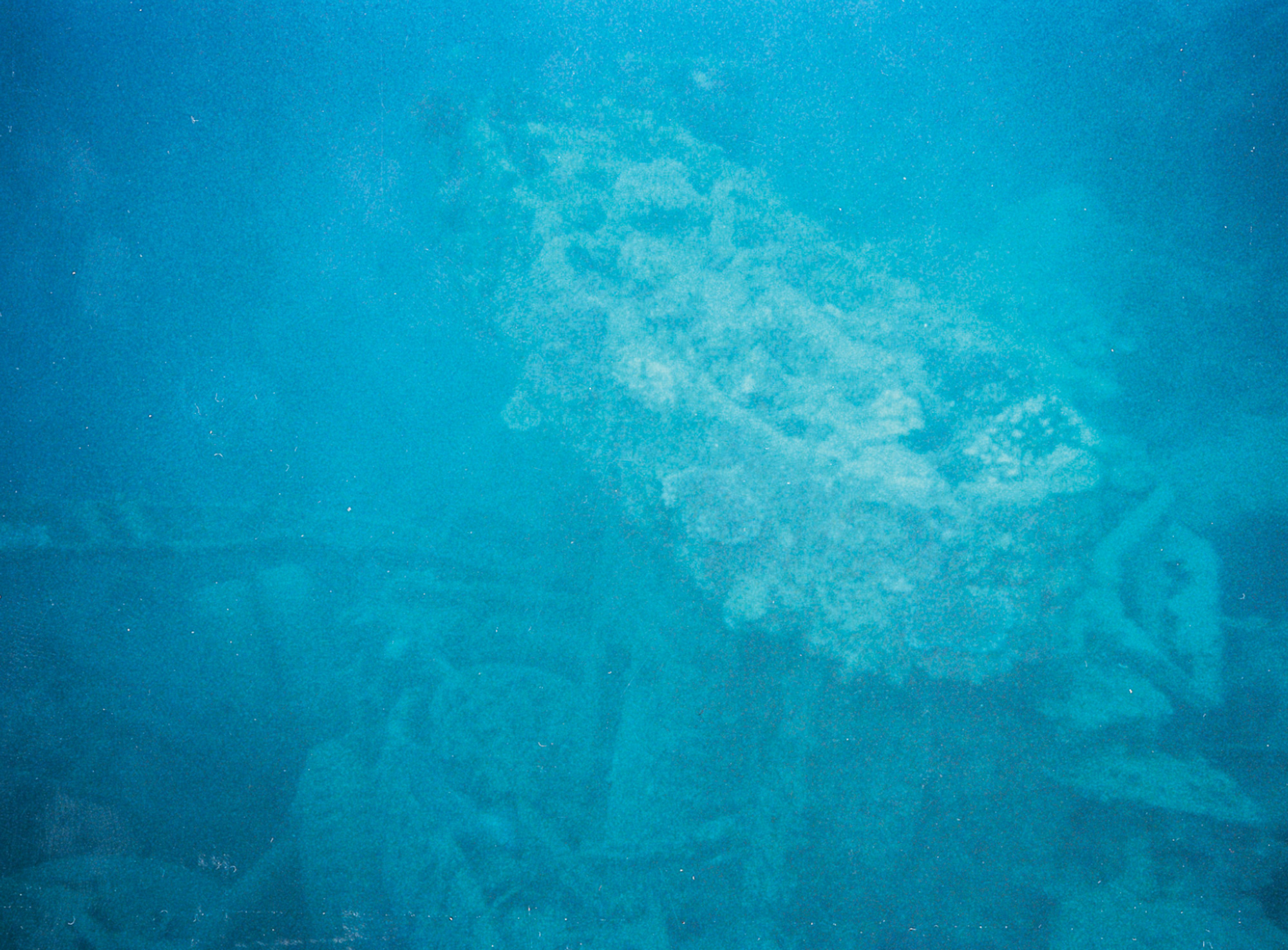
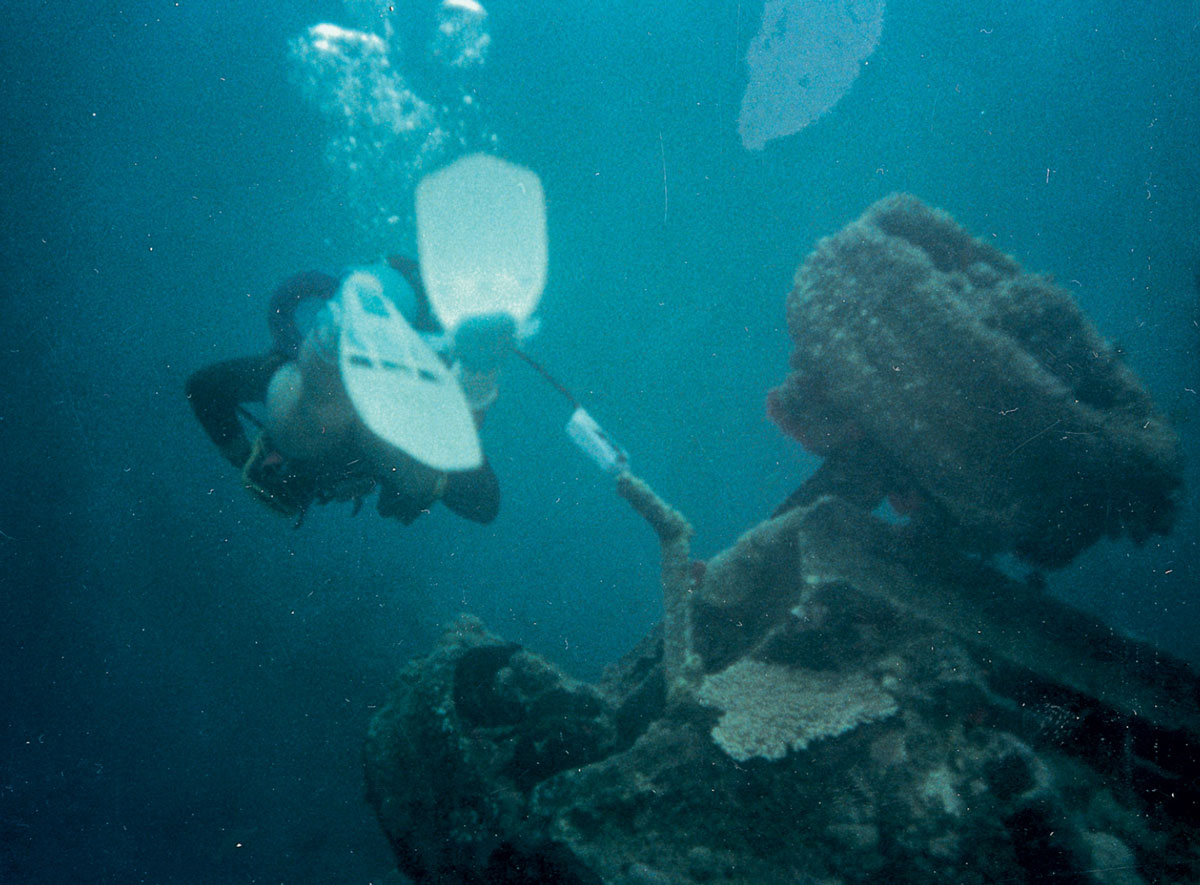
Just off the coast of Espírito Santo, an island in the Vanuatu archipelago of the South Western Pacific, there is a massive underwater dump. Called Million Dollar Point after the millions of dollars worth of material disposed there, the dump is a popular diving destination, and divers report an amazing quantity of wreckage: jeeps, six-wheel drive trucks, bulldozers, semi-trailers, fork lifts, tractors, bound sheets of corrugated iron, unopened boxes of clothing, and cases of Coca-Cola. The dumped goods were not abandoned by the ni-Vanuatu people, nor by the Franco-British Condominium who ruled Vanuatu (then known as the New Hebrides) from 1906 until 1980, but by personnel of a WWII American military base named Buttons. At the end of the war, sometime between August 1945 and December 1947, the US military interred supplies, equipment, and vehicles under water. The travel writer Thurston Clarke describes the scene:
The Seabees built a ramp running into the sea and every day Americans drove trucks, jeeps, ambulances, bulldozers, and tractors into the channel, locking the wheels and jumping free at the last second. Engine blocks cracked and hissed. Some Seabees wept. Ni-Vanuatu witnessing the destruction of wealth their island would never see again, at least in their lifetimes, thought the Americans had gone mad.[1]
Despite salvage efforts,[2] the dumping ground remains visually astounding, “a monument,” as one diving website puts it, “to the futility of war.”[3]
Buttons was one of two bases the American military established on the archipelago; the other, Roses, was constructed shortly afterward on the nearby island of Efate. Base construction on Santo and Efate was very rapid; in just weeks, several islands along the periphery of the Condominium’s jurisdiction were transformed into bustling American military hubs. On the theory that land invasion of Japan lay ahead in the prosecution of the war—the Manhattan Project remaining top-secret, and indeed, subject to failure until the last tests had been completed—American manpower and material were poured into the region. The base at Efate and the airstrip on Santo processed half a million soldiers. (In comparison, the entire native population of Vanuatu at the time was 60,000.[4]) As it turned out, however, the South Pacific theater had been oversupplied for its brief stint in the war, and combat-based military activity on Vanuatu was short-lived. Action quickly moved north toward Japan, and barely six months after the bases’ completion, Vanuatu comprised the extreme rear of the American line. Although both bases performed important roles in the battles of Guadalcanal—Efate had the chief hospital, and Santo, which possessed the southernmost American airstrip, received wounded soldiers and combat equipment—they were primarily utilized as holding grounds and outfitting stations. As a Major Heinl reported to National Geographic in August 1944, “jungles [were] cleared to make way for miles of stacked munitions and supplies.”[5]
The storage on Vanuatu was never touched again, except to be thrown away. Despite the merchandise stockpiled on Santo and Efate, American industry continued to produce and ship new products; it was economically advantageous for the American military to use these rather than to rehabilitate the storage.[6] When the war ended, the Vanuatu holdings constituted a daunting pile of poorly organized, mislabeled crates. To compound the problem, four years in the jungle had deteriorated some of the material; shipping costs were expensive, and only a handful of soldiers remained on the islands to sort and distribute the cargo. And as if that wasn’t enough, the enormous quantity of surplus—the “miles” of supplies—presented a major allocation dilemma. Santo and Efate were not unique in this situation. The Philippine naval base at Calicoan, for example, was completed just two weeks before V-J day. Equipped for 5,500 men, the base immediately abandoned its initial mission—to support the final push in the Pacific—and began a Sisyphean dismantling: “[Calicoan’s] second and final mission was born, that of disposing of itself.”[7]
Getting rid of military surplus entailed selling, redistributing, returning, or dumping some nine million tons of material, valued at nearly four billion dollars.[8] The huge task, known as Operation Roll-Up, was strained by the pressure to bring American troops home (under Operation Magic Carpet), and plans were hastily executed, often without sufficient manpower. Under the Surplus Property Act (1944), the American military developed a complex bureaucratic apparatus to handle disposal decisions. Area Commanders had authority to jettison all material deemed used or deteriorated. They then declared their excess, defined as everything above “reasonable stock levels,”[9] to ComServPac (Commander, Service Squadrons, Pacific Fleet) and to the local dispatch of the Foreign Liquidation Commission, an agency of the US State Department. ComServPac received the declarations, investigated options, and eventually issued “final disposal instructions.”[10]
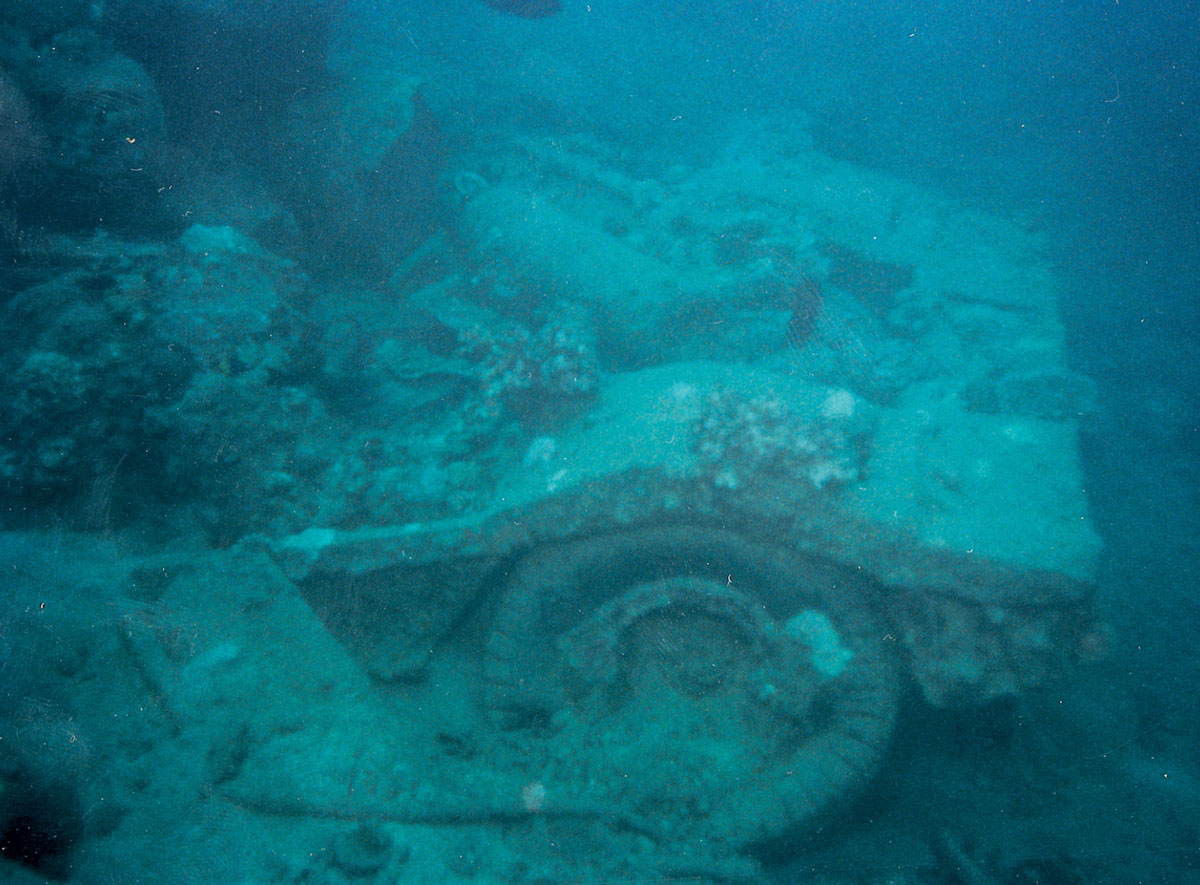
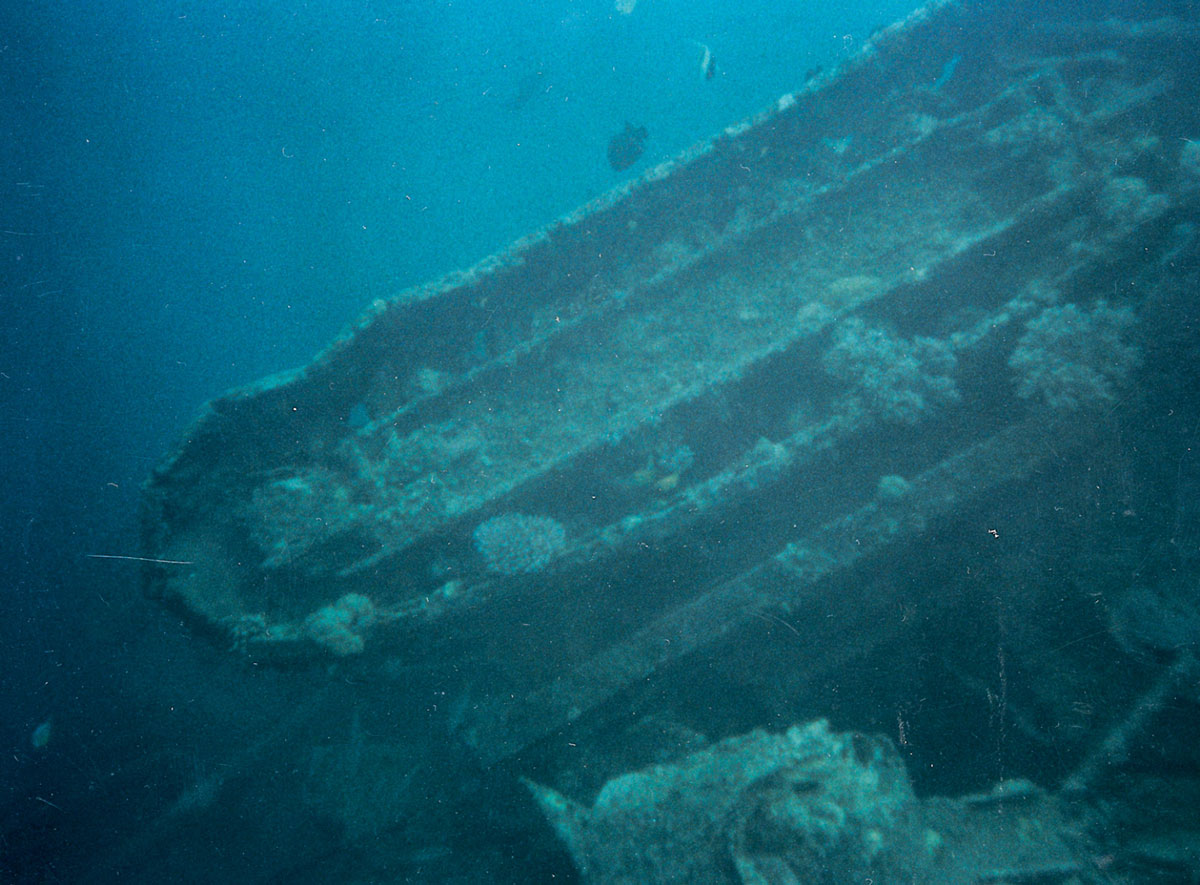
Operation Roll-Up was hindered at all levels by the logistics of immense disposal. Bulk sales of scrap metal and construction equipment were negotiated with China and the Philippines; other governments made smaller purchases, and a few small sales were locally arranged. According to demands from the nascent United Nations Relief and Rehabilitation Administration, the United States donated some supplies to South Pacific islands to aid post-war reconstruction. Nevertheless, the vast amount of surplus haunted allocation efforts. As the operation continued, ComServPac became overwhelmed with declarations of excess, and Area Commanders were invested with increasing authority to dispose of local property as they saw fit.
When efforts at redistribution and sale failed, the property was destroyed or dumped at sea. Military records account for the underwater dumping of some ammunition but nothing on the scale of Million Dollar Point.[11] The official Navy record of Operation Roll-Up maintains that “items were to be retained to the extent of their useful life.”[12] Of course, a short “useful life” works in tandem with healthy capitalism; the decision to dump, like the decision to over-produce, was indubitably influenced by economic concerns. Thurston Clarke plausibly suggests that the property was sunk because the American economy could not have recovered from an influx of lower-priced, almost-new goods.[13] Still, why wasn’t the property given to the ni-Vanuatu? Ironically, the bulk of the surplus, an estimated 90 percent, consisted of civilian items[14]—items the ni-Vanuatu would have undoubtedly appreciated.
It is possible, as Clarke mentions, that the military tried to sell the material to the Franco-British colonials, and dumped it in retaliation when they refused to buy. Ni-Vanuatu presumably witnessed the dumping, but no one has gathered their stories. However, Solomon Islanders’ oral histories are helpful on this point, as their experience of American installations and demobilizations were similar. The Solomon Islands, just to the north of the Vanuatu group and under British control, were another focal point of the American war effort; surplus from these islands’ bases was destroyed as well. Vehicles were rolled off barges into the water; equipment was burned, and a huge cache was buried at Stirling Island. The base buildings were blown up. According to witnesses’ testimony, Solomon Islanders held the British colonial government, not the American military, accountable for this destruction. Islander Nathan Oluvai describes,
Timber and other building materials, clothing, and food, it was all burned or spoiled or left to rot or thrown into the sea—anything so that we didn’t get it. This made the Americans cross at the British. They wanted to shoot Mr. Gill [a British authority] once because he stopped us from taking the food. We used to hide and wait for them to throw away this food—like new tins of bacon and sausage. New ones, new clothes. Then his police would report us. Sometimes the Americans would just put things outside their tents meaning for us to take them.[15]
The Solomon Island narratives concur: the Americans tried to leave pots, pans, guns, and timber to the locals, but the booty was confiscated by the British. Islanders who took anything, even scrap slated for destruction, were severely punished.
The colonial politics at play in the Solomon Islands were also active in Vanuatu. The Franco-British interest in protecting the status quo was continually at odds with the behavior of the Americans. In order to build their bases as quickly as possible, the US military conscripted island natives for three-month labor stints. Conflicts of interest arose between the Condominium—who wanted to “maintain pre-war relations of colonial domination” and also keep a labor reserve for local business, plantation, and domestic needs—and the US military, who needed large numbers of recruits healthy enough to work arduous hours.[16] Tensions were exacerbated by the Americans’ low opinion of Condominium administrators, whom they judged incompetent. The joint government structure had created an inefficient bureaucracy, including two separate police forces and a complex judicial system presided over by a neutral judge appointed by the king of Spain.[17] Initially, the Condominium had supervisory duties for the Vanuatu laborers, but the US military quickly took over, disgusted by the camps’ poor-quality food and inadequate sanitation. GIs poked fun at ceremonial practices that seemed to demonstrate colonial impotence; Solomon islanders carried Franco-British officials bodily over water, for example, and the Americans scoffed.
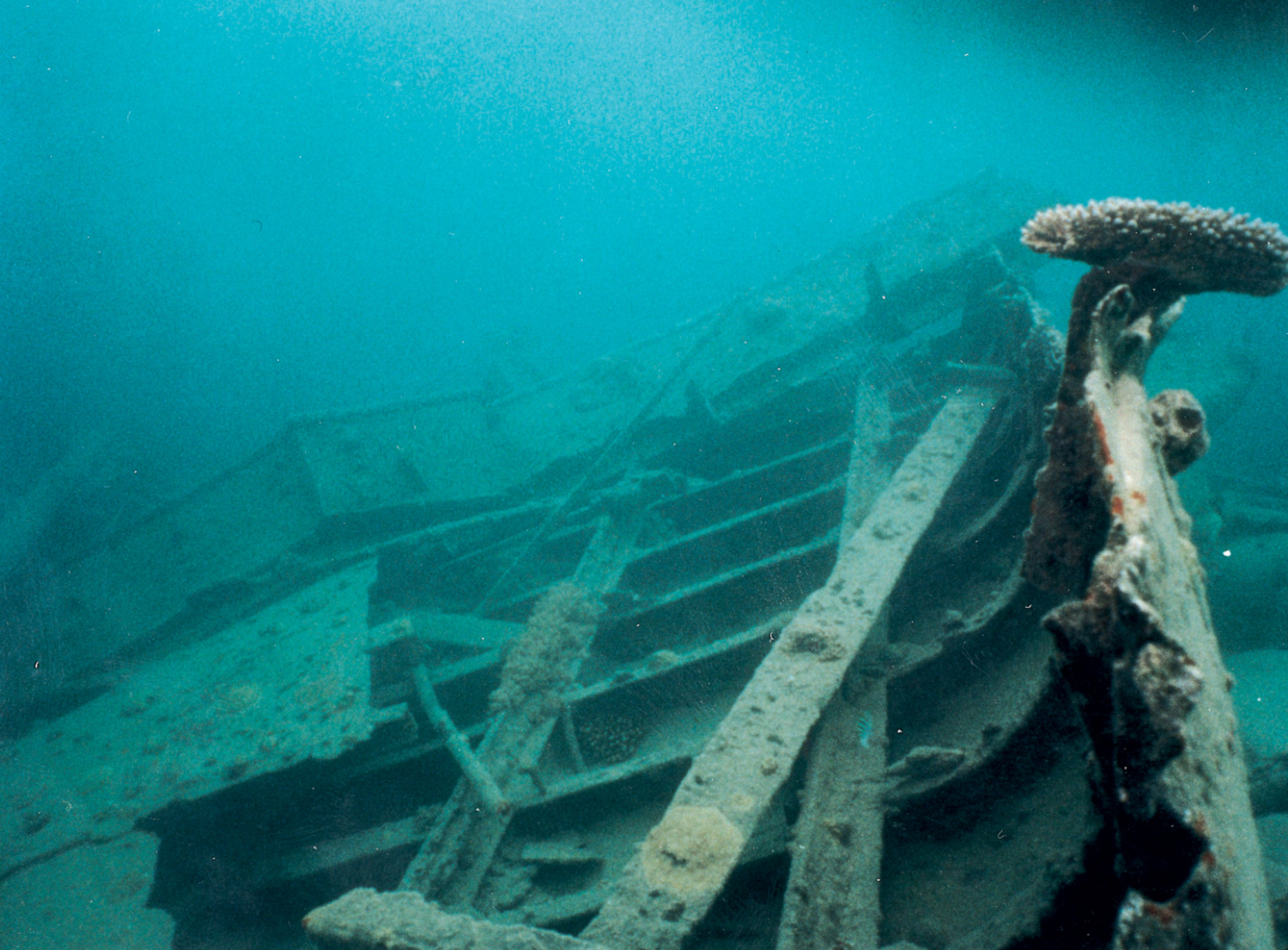
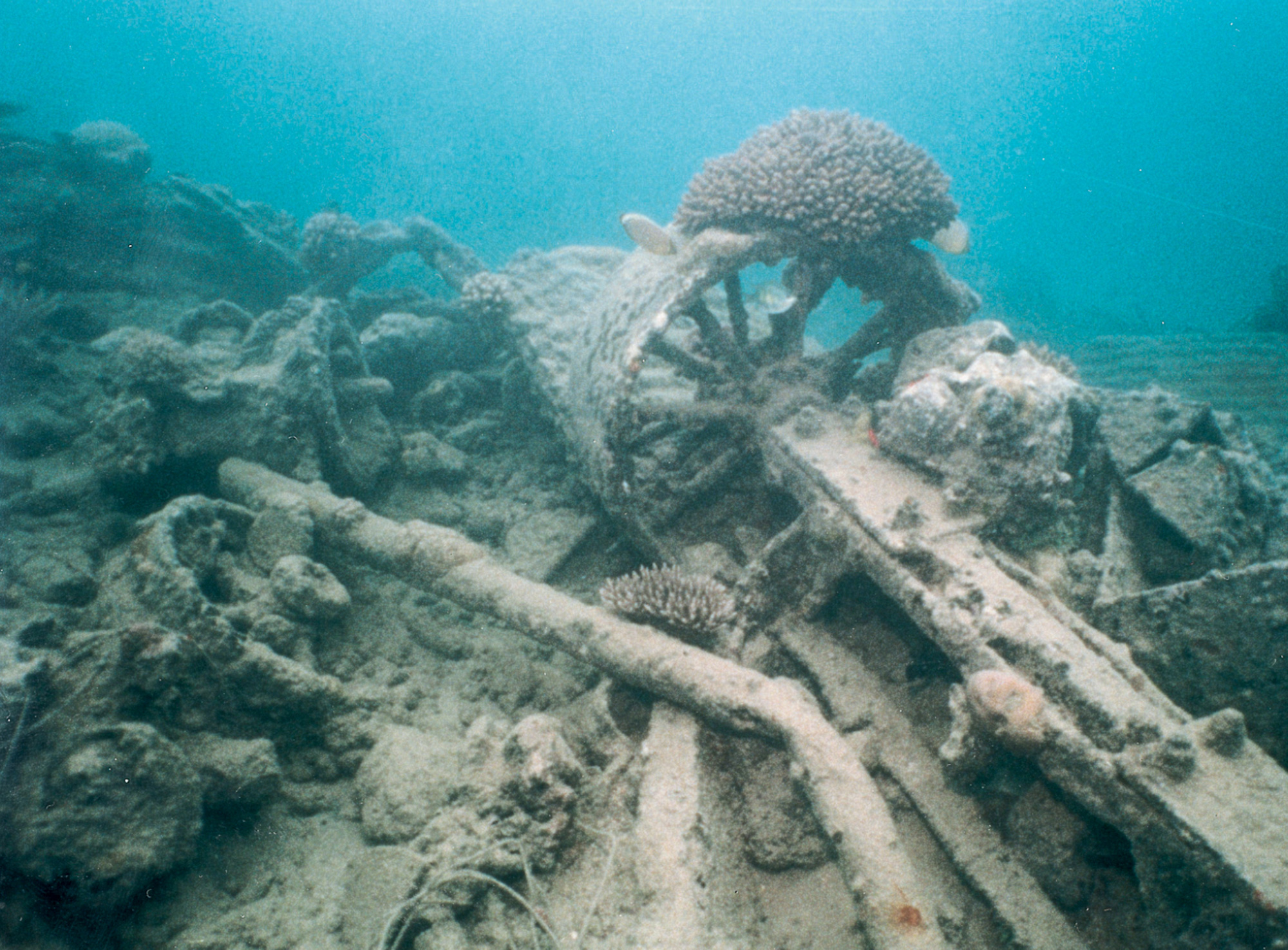
Soldiers were thus disinclined to follow the colonial government’s strict rules on how and when the Americans were to interact with the ni-Vanuatu. The military supplied material luxuries to the people that the Condominium had outlawed, including cigarettes, alcohol, penicillin, dishware, and tinned meat. Other interventions were inadvertent; anthropologists Lamont Lindstrom and Geoffrey M. White suggest that Americans’ casual use of the term “brother” fostered notions of American /ni-Vanuatu kinship.[18] Ni-Vanuatu placed high cultural value on the exchange of food, and wartime labor corps who ate in mess halls with American GIs regarded the experience very seriously. The ni-Vanuatu apparently construed their relationship with the Americans as one of equal exchange: They gave their labor to help the Americans win the war, and received material goods and friendship in return.
These arrangements stood in sharp contrast to the hierarchies of the Condominium, and exactly as the colonial government feared, wartime interactions gave impetus to independence movements in the archipelago. A new awareness of socio-political identity was cultivated that “affected and challenged ... the discourses and truths of ruling economic and political regimes.”[19] As it happened, such political independence movements were largely mobilized via Vanuatu cult religions, in which political and spiritual concerns mixed with preternatural intensity.
“Cargo cult” is an anthropologists’ coinage of the early 1950s, describing South Pacific religious beliefs that place extraordinary faith in mysteriously arriving commodities. The mid-century anthropologists who first documented cargo cults date their beginnings prior to WWII, meaning that by the early 1900s these cults were touting a doctrine that bizarrely foresaw events of the 1940s. Scholarship agrees that the chronology is correct—cargo predictions predated the arrival of the American military—but it offers no logical explanation for the coincidental timing.[20] What is clear is that when the military arrived, cargo cult predictions were literally realized. This made fertile ground for wildly successful sects; it also thrust America into the heart of cult dogma. Postwar religious practices were largely based on the activities of the US military. Cultists built loading docks according to the logic that cargo would arrive when docks were built, just as it apparently had during the American occupation. Believers routinely had visions of “Jake Navy,” the corporate logo from an American brand of cigarettes; captains and lieutenants were appointed and exercised together daily.[21] Village layouts were reorganized and genders segregated; airstrips, roads, and barrack-like housing were constructed; observances ranging from English lessons to self-imposed sexual continence were instituted—all intended to bring about the return of American wealth by simulating the conditions of an American military base.
The best known of the archipelago cults was the John Frum movement, centered on an island called Tanna (from which the Americans culled laborers for Efate). This faction followed a prophet named John Frum, who may or may not have been an actual person; a series of men seem to have assumed his guise as leader. Dressed in a red jacket with brass buttons, a tall black hat, and veil, Frum urged a return to kastom, the traditional ways of the Tannese. He advocated communal living and kava drinking, and rejected the well-established authority of the English Presbyterian missionaries. For a time in the late 1940s, a man named Isaac served as Frum’s mouthpiece, prophesying with a magic bag of stones; at other times, Frum took on characteristics of the Biblical Noah. On Espírito Santo, the corollary to Tanna’s Frummists were the Santo Naked Cult, which arose in the early 1920s under the command of a man named Runovoro. The early phase of the Naked movement culminated in the murder of a British planter in 1923; six cult leaders were executed. Runovoro wrote in a secret language, predicted that savior ancestors “would arrive after a Deluge in a great white ship loaded with Cargo,”[22] and prophesied the end of white Europeans on the island. Cultists on Vanuatu began to talk of a “King of America” named Rusefel (Roosevelt) who was alternately John Frum’s father, brother, or Frum himself. In 1941, John Frum claimed that “he would send his son to America to bring back the King”[23]; months later, American fleets began arriving en masse on Vanuatu.
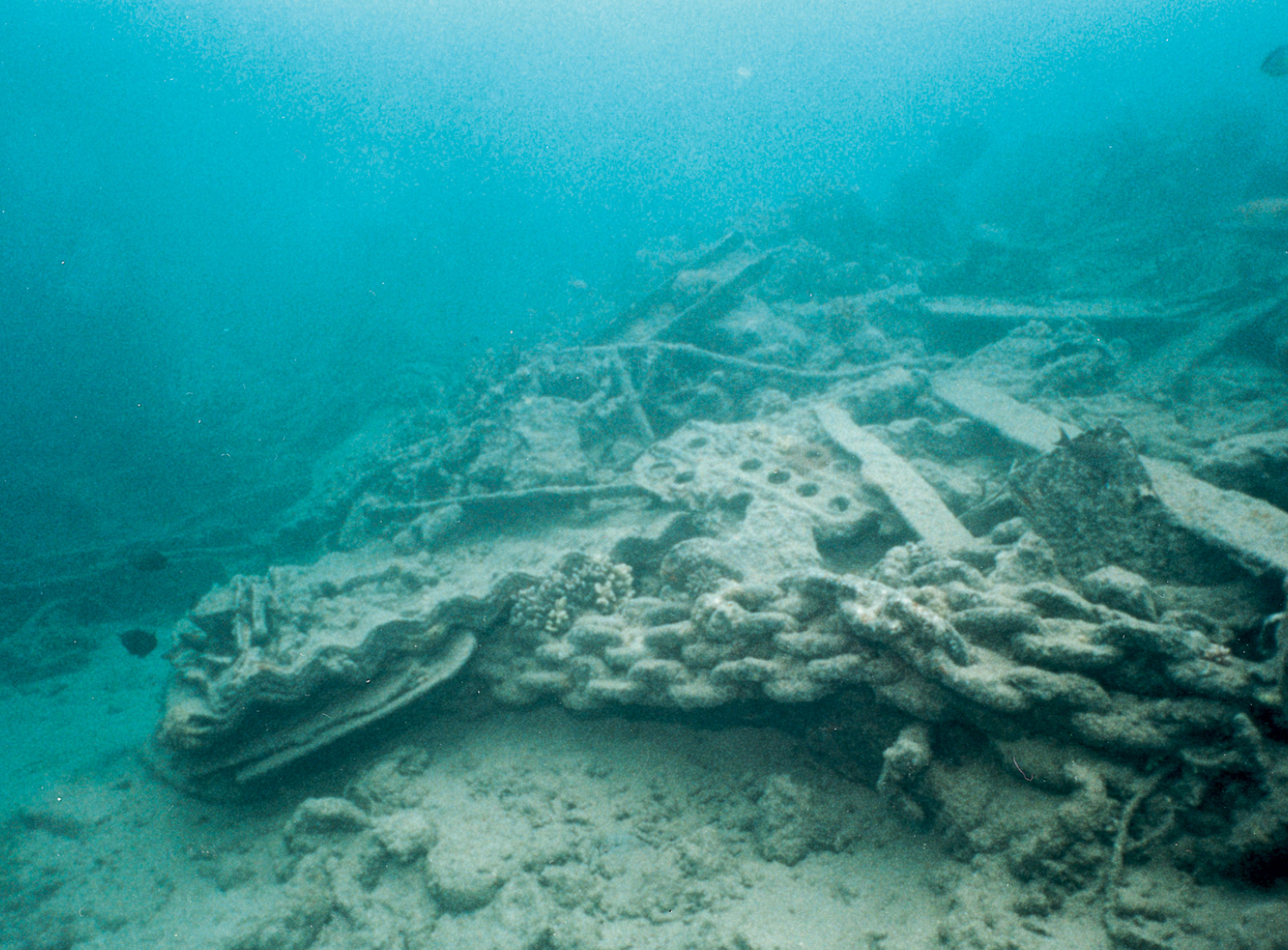
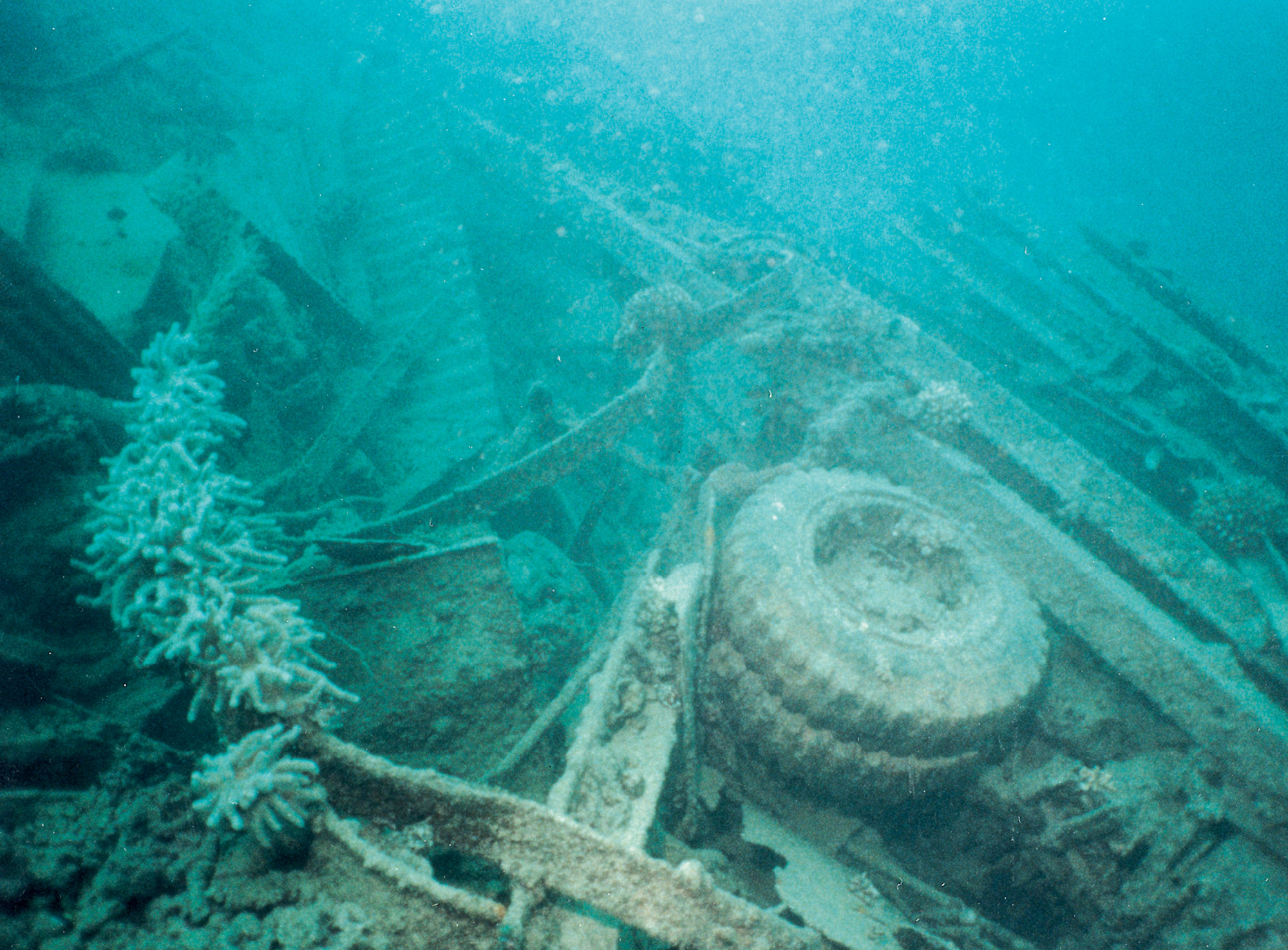
Evolving as creative hybrids of anti-colonial sentiment, American xenophilia, reclaimed tribal traditions, and traces of Presbyterianism, the cults rapidly gained a popularity that predictably concerned the Condominium. By their order, American generals publicly declared that they were not gods incarnate. Religious connections persisted, however, and the Condominium responded with forcible suppression; in 1943, two men were executed for impersonating John Frum. (In the following fifteen years, 140 more men were arrested for their religious activity.) Part of the government’s concern arose from the fact that the American presence was destabilizing colonial hierarchies of race. The ni-Vanuatu were both terrified and entranced by African-American troops stationed on the islands and the appearance, at least, of racial equality. A prewar cult goal—the expulsion of all Caucasians—was revised, and the colors black and white gained symbolic importance. The sons of John Frum, expected soon, were suddenly described as half white and half black; Frum commanded that all clothing and decoration on the island be white or black, instead of the traditional red and yellow. This particular understanding of color as a marker of Americanness was no doubt strengthened by the dozens of black and white road signs, “exactly like the familiar US highway markers of the homeland, but neatly labeled ’Efate, U.S. No. 1.,”[24] that homesick American boys had erected around the island.
In the same vein, all kinds of material objects and symbols of the American presence—from red wood crosses modeled on the Red Cross to marine hats—were adopted as religious paraphernalia, invested with meaning that seemed strangely independent of, yet intimately connected to, their original purposes. At sunup and sundown, cult members raised and lowered an American flag, salvaged from a military dump, and assigned a color guard to watch over it during the day. Lamont Lindstrom observed that:
US military uniforms and insignia ... are prized possessions. A few men were lucky enough to secretly retain the numbered dog tags issued to them during tours of labor for the US military. Others still recall the songs they learned from American servicemen and are pleased to sing creditable rendering of “God Bless America” and “The Marine’s Hymn.” ... Every 15 February, a military drill team marches with bamboo rifles and the logo USA painted in red across the marcher’s chests and backs. The team is commanded by a sergeant, “with stripes,” who calls out still recognizable commands (which are, however, unintelligible to the Tannese) such as “to the right!”[25]
To the Western observer, cult doctrine and practice appears shockingly Amero-centric. Yet, it is important to keep in mind that America was not a static object of cult worship. “America,” and all things American, were put to use as vehicles for challenging colonial authority. Emulating military procedures, adopting military lingo, and folding America into local religious history had the psychological effect of aligning the disenfranchised ni-Vanuatu with the all-powerful Americans; performance of American military ritual invoked power by mimicking the powerful.
The departure of troops reified faith in American salvation insofar as it meshed well with the doctrine of Christ’s second coming as taught by the missionaries. Cultists immediately began to prepare for the Americans’ return. Frum believers cleared a plateau on northern Tanna for an airstrip that would receive John Frum’s American sons, just like the airstrip that had been built a year earlier on Efate. The airstrip was also expected to receive American goods, and Frum said that people who did not help to build would be bombed by planes. About the same time, members of the Naked cult built a dock on Santo in anticipation of American cargo, and cleared roads to transport it to the villages.
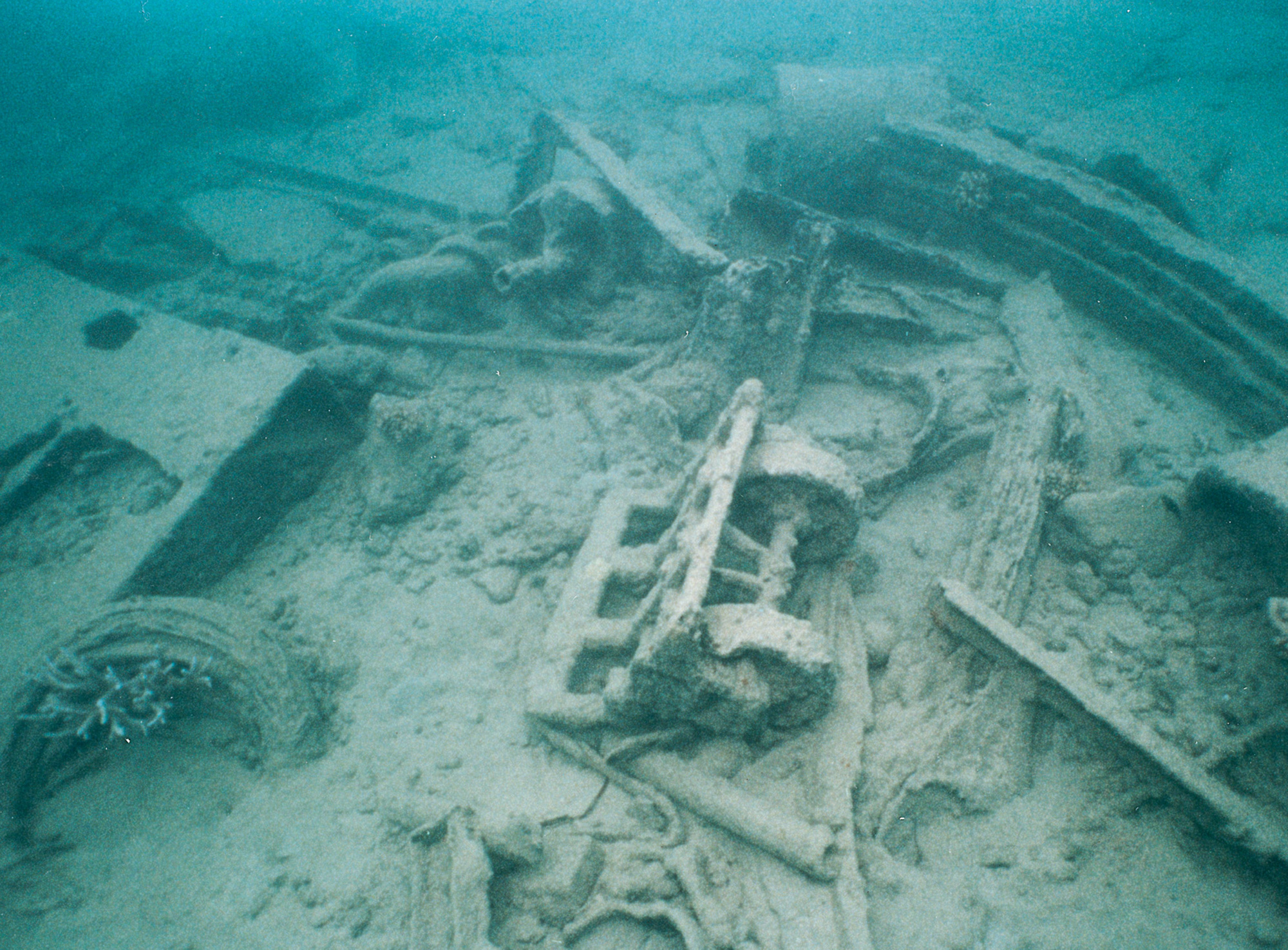
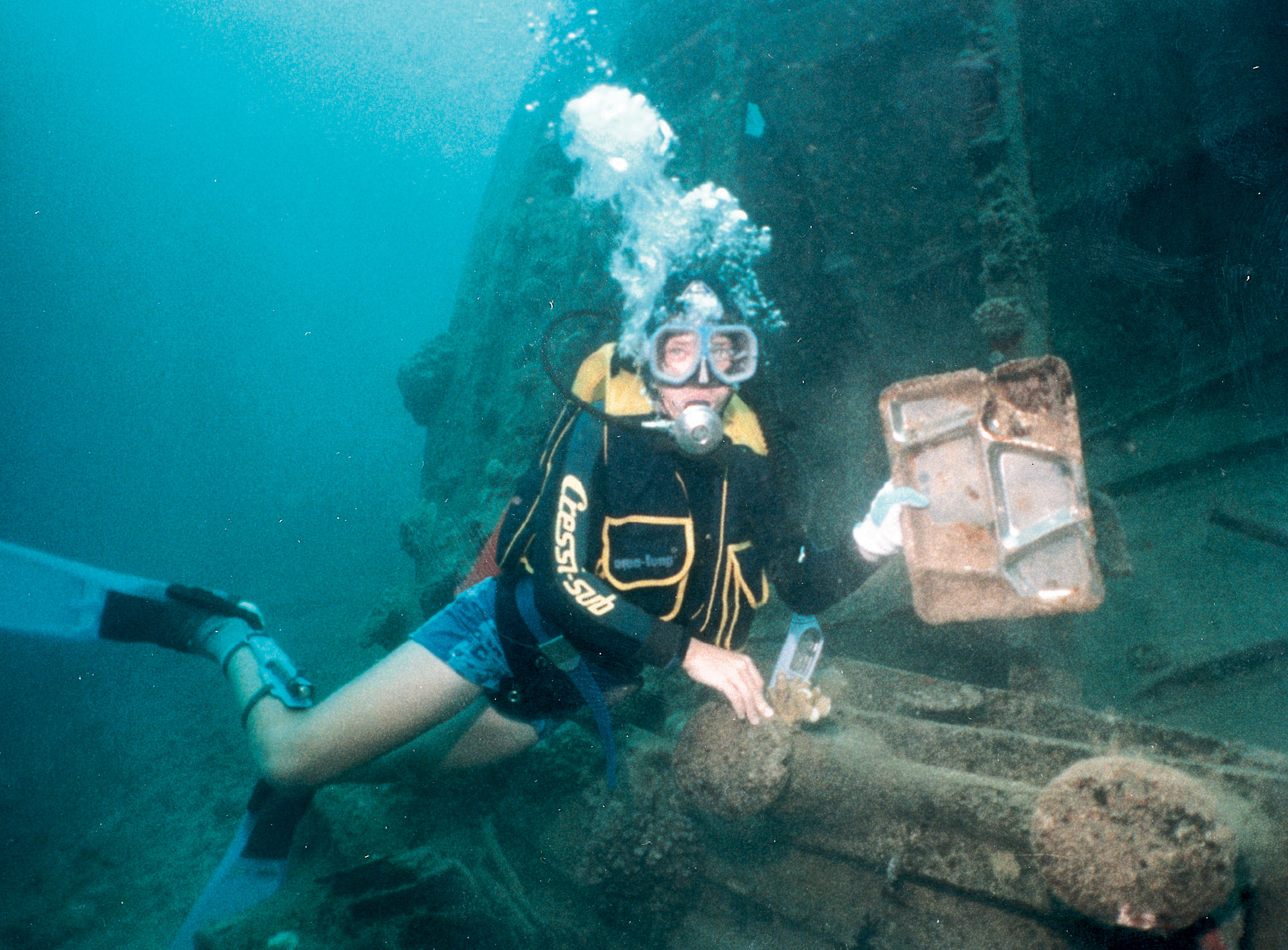
Not only did cultists prepare for the arrival of new cargo, however; they also began to actively demolish what they had. Ni-Vanuatu started collectively dumping their British currency in the water, and raids on colonially owned trade stores were organized to gather extra currency to throw away.[26] Not only money was destroyed, but livestock and indigenous crafts.[27] Since so many cult practices mimicked American behavior, one wonders if the dumping wasn’t also a reenactment of witnessed events, such as the strange “construction” of Million Dollar Point. The spectacular dump has never been explicitly linked to cult activity, but the connection seems plausible; the ni-Vanuatu regarded the American military’s conspicuous excess as a direct function of their power. Again, in the absence of oral histories from Vanuatu itself, other regional testimony may be instructive. An Enewetak chief of the Marshall Islands noted that the gifts the islanders gave to American GIs were later seen on the beach, discarded, and he explained why: “All kinds [of things], they throw out, for they add nothing. Such is their strength, they do not need them.”[28] Quite likely, the ni-Vanuatu aimed to evoke this godlike strength by casting their things away. So outside the perimeters of recognizable human activity, the military’s expenditure was deemed the behavior of divinities: large-scale destruction of usable goods and a cavalier attitude toward disposability were inscribed in cargo cult religious practice. Million Dollar Point thus unfolds as a prescient symbol functioning in two directions: showcasing American capitalism’s disposal imperative, it also speaks to the immaterial dimensions of material caught in cross-cultural exchange. One country’s waste betokens another’s independence.
- Thurston Clarke, Searching for Crusoe: a Journey Among the Last Real Islands (New York: Ballantine Publishing Group, 2001), p. 76.
- In 1948 and 1949 New Zealander Reece Discombe rescued fourteen bulldozers and hundreds of tires, propellers, and lengths of copper wire. The vehicles were simply drained, rewired, and sold in Australia. The Soviet government is rumored to have excavated several tons of scrap iron in the 1950s.
- Earl Hinz, “New Hebrides,” http://www.pacificwrecks.com/provinces/vanautu_harbor.html [link defunct—Eds.], 27 December 2002.
- Cited in Monty Lindstrom, “Cult and Culture: American Dreams in Vanuatu,” Pacific Studies IV:2 (Spring 1981), p. 104.
- Major Robert D. Heinl, Jr. “Palms and Planes in the New Hebrides,” National Geographic Magazine LXXXVI: 2 (August 1944), p. 256.
- Contemporaneous military documents are straightforward about such decisions. For example: “It became clearly uneconomical to use secondhand equipment and material ... when new material was available.” “Operation Roll-Up: The History of Surplus Property Disposal in the Pacific Ocean,” United States Government Department of the Navy, Naval Historical Archives (Washington, D.C.: 1948), p. IV-32.
- Ibid., pp. IV-13.
- Ibid., p. 1.
- Ibid., pp. I-5.
- Ibid., pp. I-6.
- The military report specifically mentions the underwater dumping of artillery at Million Dollar Point: In May of 1947, an ammunition disposal team removed some 75 500-lb. bombs, 250 projectiles, and 250 cases of ammunition “left among the coconut trees of Espírito Santo and disposed of them by dumping at sea.” In July, 60 tons of bombs from Efate were similarly dumped. It remains unclear whether the decision to dump everything at Million Dollar Point was made by local US personnel or from a higher source. See “Operation Roll-Up,” pp. IV, 36–37.
- Ibid., pp. I-9.
- Clarke, p. 76.
- "Operation Roll-Up,” pp. I, 9–10.
- Nathan Oluvai, “World War II Oral History Project,” John F. Kennedy Library, Boston, Massachusetts.
- Lamont Lindstrom, “Oral Histories of Labor Corps from Tanna,” in Geoffrey M. White & Lamont Lindstrom, eds., The Pacific Theater: Island Representations of WWII, Pacific Islands Monograph Series, no. 8 (Honolulu, 1989), pp. 398–399.
- Heinl, p. 231.
- Geoffrey M. White and Lamont Lindstrom, “War Stories,” The Pacific Theater, pp. 17–18.
- Lamont Lindstrom, p. 396.
- There is debate as to when America was first integrated into the existing cargo cults. Some anthropologists suppose the ni-Vanuatu were familiar with a handful of foreign powers—Japan, France, England, Spain, America—and only fortuitously chose America as their mythical savior prior to US arrival. Others trace the appearance of America in cult teachings to the ni-Vanuatu’s word-of-mouth knowledge about the bombing of Pearl Harbor. Why the most spectacular moment of American vulnerability would encourage the ni-Vanuatu to imagine America as a future savior is hard to explain. See Peter Worsley, The Trumpet Shall Sound: A Story of ‘Cargo’ Cults in Melanesia (New York: Schoken, 1968), p. 156.
- Guiart, p. 170.
- Worsley, p. 148.
- Joe Nalpin, cited in Jean Guiart, “John Frum Movement in Tanna,” Oceania XXII: 3 (March 1952), p. 176.
- Heinl, p. 250.
- Monty Lindstrom, p. 106.
- See Miles, p. 105; Guiart, p. 171; Worsley, p. 150.
- Worsley, p. 150.
- Cited in Lawrence Marchall Carucci, “The Source of the Force in Marshallese Cosmology,” The Pacific Theater, p. 87.
Sasha Archibald is a graduate student at New York University and an assistant editor at Cabinet.
Spotted an error? Email us at corrections at cabinetmagazine dot org.
If you’ve enjoyed the free articles that we offer on our site, please consider subscribing to our nonprofit magazine. You get twelve online issues and unlimited access to all our archives.